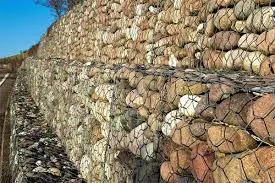
Nov . 15, 2024 09:20 Back to list
welding steel mesh
Welding Steel Mesh Techniques, Applications, and Benefits
Welding steel mesh is a critical process in various industries, particularly in construction, manufacturing, and infrastructure development. Steel mesh consists of interconnected steel wires or bars, typically arranged in a grid pattern. This structural component provides strength, stability, and flexibility to various projects. This article will explore the techniques involved in welding steel mesh, its applications, and the benefits it offers.
Techniques for Welding Steel Mesh
Welding steel mesh involves several techniques, depending on the type of mesh, the desired strength, and the intended application. Common welding methods include
1. Spot Welding This technique is widely used for joining steel mesh. In spot welding, the welding machine applies heat to specific points where the wires intersect. This localized heating causes the metal to melt and fuse without affecting the surrounding areas, maintaining the mesh's integrity.
2. MIG Welding (Metal Inert Gas Welding) MIG welding is another popular method for welding steel mesh. This process uses a continuous wire feed and a shielding gas to protect the weld pool from contaminants. MIG welding is efficient and allows for precise control, making it suitable for various mesh types.
3. TIG Welding (Tungsten Inert Gas Welding) TIG welding involves a non-consumable tungsten electrode to create the weld. It is known for producing high-quality welds and is particularly useful for thinner steel meshes, where precision is paramount.
4. Arc Welding This technique involves the use of an electric arc to generate heat and fuse the mesh wires. Arc welding can be applied to thicker steel sections and offers strength and durability.
5. Resistance Welding This method passes a high electrical current through the mesh at the points of contact. The resistance between the wires creates heat, which fuses them together. Resistance welding is often used for automation in large-scale mesh production.
Each of these techniques has its advantages and may be chosen based on the specific requirements of the project, including the thickness of the mesh, the environment in which it will be used, and economic considerations.
Applications of Welded Steel Mesh
Welded steel mesh has a wide range of applications across various sectors. Some of the most common applications include
1. Construction Steel mesh is essential in the construction of reinforced concrete structures. It provides tensile strength and helps distribute loads, reducing the risk of cracking and structural failure.
welding steel mesh

2. Fencing Welded steel mesh is used for making security fences, agricultural enclosures, and animal confinement structures. The strong interwoven design prevents breaches and offers durability against weather conditions.
3. Road and Bridge Construction In highway and bridge construction, welded steel mesh is used to reinforce pavement. It helps control cracking and ensures that the structural integrity is preserved under heavy loads.
4. Manufacturing Many manufacturing industries utilize steel mesh in producing filters, screens, and grates. Its strength and ability to withstand high temperatures and pressures make it ideal for these applications.
5. Civil Engineering In civil engineering projects, welded steel mesh is employed in retaining walls, foundations, and underground structures as a means of providing structural support.
Benefits of Welding Steel Mesh
Welding steel mesh offers several benefits that make it a preferred choice in various applications
1. Strength and Durability Welded steel mesh provides excellent strength and durability, making it capable of withstanding significant loads and resisting wear over time.
2. Cost-Effectiveness Due to its ease of installation and reduced labor costs, welded steel mesh can be a more economical option compared to other reinforcing methods.
3. Versatility Steel mesh can be designed to meet a wide range of specifications, making it suitable for diverse applications in different industries.
4. Reduced Cracking When used in concrete applications, welded steel mesh helps control cracking due to temperature fluctuations and load impacts, enhancing the longevity of the structure.
5. Improved Safety In fencing and security applications, welded steel mesh offers a high level of protection, discouraging unauthorized access and enhancing safety.
In conclusion, welding steel mesh is a fundamental process with significant applications in numerous industries. Understanding the various welding techniques and their respective benefits can help professionals choose the right method for their specific needs, ensuring structural integrity and safety in their projects.
-
Why a Chain Link Fence is the Right Choice
NewsJul.09,2025
-
Upgrade Your Fencing with High-Quality Coated Chicken Wire
NewsJul.09,2025
-
The Power of Fence Post Spikes
NewsJul.09,2025
-
The Best Pet Enclosures for Every Need
NewsJul.09,2025
-
Secure Your Property with Premium Barbed Wire Solutions
NewsJul.09,2025
-
Enhance Your Construction Projects with Quality Gabion Boxes
NewsJul.09,2025
Products categories











